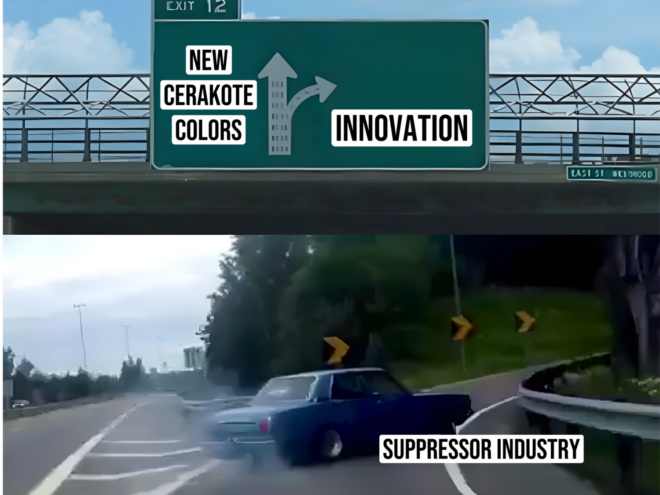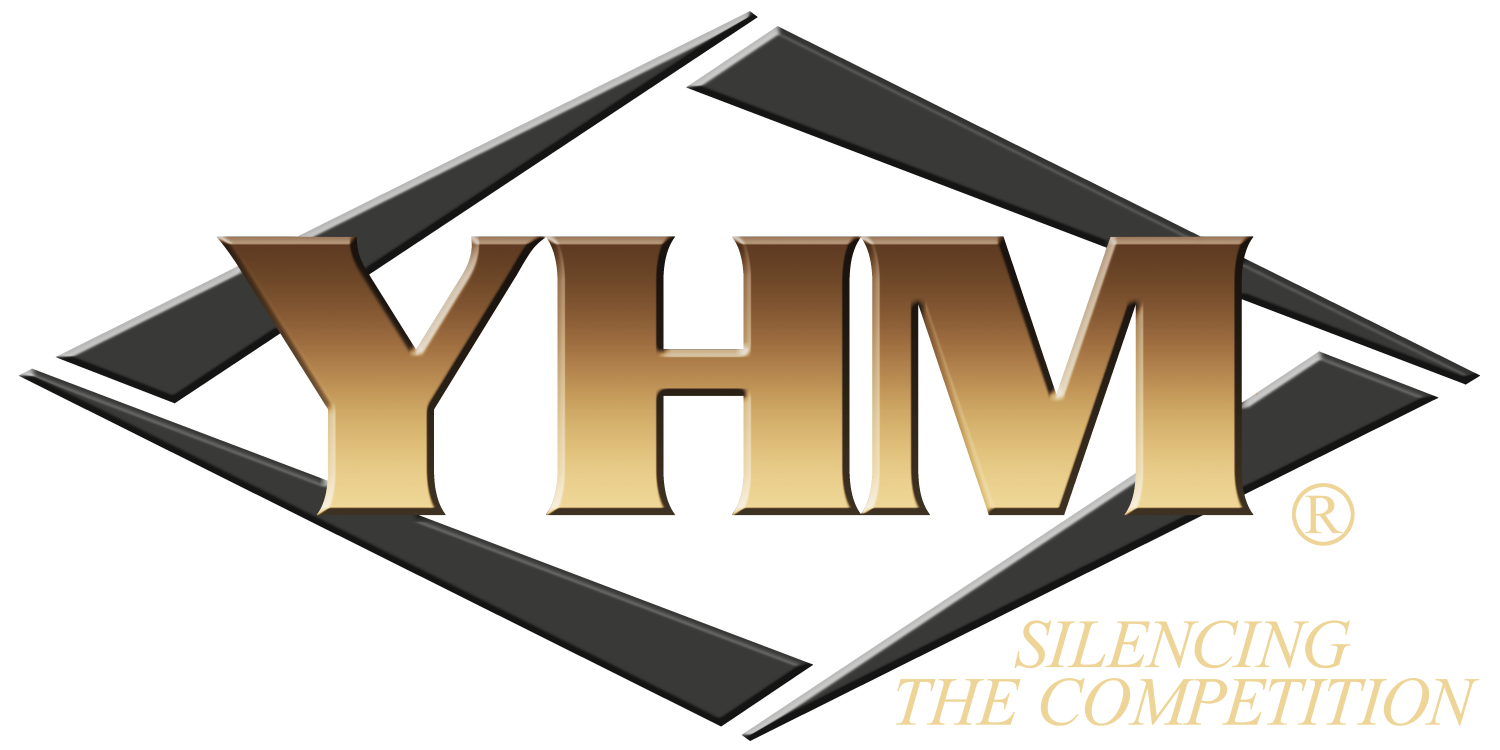Good evening everyone and welcome back to TFB’s Silencer Saturday brought to you by Yankee Hill Machine, manufacturers of the brand new YHM 338 Bad Larry Suppressor. Last week we reviewed our suppressor coverage from the 2024 SHOT Show. As we wait for the new review cans from the show to start arriving, I thought we could spend some time discussing suppressor innovation and what can we expect to see develop in the years ahead. Let’s get in to it.
More Silencers @ TFB:
- Wheelgun Wednesday: Silencing the Gap – Part 1
- Wheelgun Wednesday: Silencing the Gap – Part 2
- SILENCER SATURDAY 313: 2024 SHOT Show Silencers In Review
Note: If you haven’t had the chance to read the suppressed revolver series here at TFB by Giorgio O., it is worth your time. Links above.
SILENCER SATURDAY #314: Suppressor Innovation – Where Are We Going?
The suppressor industry has made near parabolic progress in the last two decades – in both the research and design and the legal and administrative areas surrounding the National Firearms Act (NFA) of 1934. For the most part, because of a $200 tax to transfer or make (non-licensees) silencers, the firearms industry surrounding suppressor design came to a standstill. There were periods in history, usually surrounding major military conflicts, that a specific need for suppressed firearms dictated new designs. But the commercial markets didn’t start making significant changes until the turn of the century, when a $200 tax became more “affordable” thanks in large part to inflation caused poor monetary policy.
And even with all of our recent progress, some of the development of NFA-controlled devices still feels more incremental than it does revolutionary. To be clear, there are real engineers in the industry working on modeling, fluid dynamics, and internal geometries that squeeze every possible decibel from the surrounding air. But until additive manufacturing entered the silencer conversation, most modern suppressors were a round tube filled with a series of stacked cones, with varying spacing, differing internal diameters, and some proprietary geometry changes. We have advanced in our use of new materials like lightweight titanium alloys and strong steel alloys and away from aluminum.
With all of our progress in the past few years, can we predict the course of the industry for the next 10 to 20 years? I am going to make a few predictions and I invite you to add yours in the comment section below.
Additive Manufacturing/3D Printing – Direct Metal Laser Sintering (DMLS)
Let’s start with the easiest prediction first; the use of DMLS in the suppressor industry will continue to increase at a rapid pace. As we have discussed several times in the past, additive manufacturing allows engineers to design suppressors that are difficult or impossible to manufacture using traditional machining processes. Besides the novel designs that can include complex gas flow pathways, suppressors constructed with DMLS processes are inherently strong, are a single piece of alloy, and are typically lighter than their traditional counterparts. Seven years ago I posted a review of my Delta P Brevis II Ultra DMLS titanium suppressor – the comment section was dominated by non-believers.
And some of the points made by those neigh sayers are still in play today. For one, DMLS machines are expensive, especially when compared to CNC machines. The power requirements and usage are costly as well, running high voltages for extended periods of time. And because most DMLS machines produce dozens of pieces at the same time, a disruption in the manufacturing process can mean scrapping an entire lot of suppressors. And the biggest concern brought up by consumers is the ability to repair damaged 3D-printed suppressors. Currently there is no easy way to rebuild a DMLS manufactured suppressor.
I see a lot of the detractors for additive manufactured silencers being addressed over the next decade. Prices of the machines themselves will drop significantly, renewable energy options may reduce the cost of electricity, and repair processes will be perfected. All of which will reduce the costs of products to end users. In two decades, we may even see DMLS equipment available (affordable) to consumers. As prices drop, engineers will be open to more challenging and riskier designs that may not have had market viability in the past.
Eventually printed silencers will outnumber machined silencers by a wide margin.
Mounting Systems and Muzzle Devices
More recently, in the last five years, the HUB mounting design that is centered on 1.375” x 24 threads has become a de facto standard across multiple manufacturers. This means that consumers can purchase new silencers without having to change the muzzle devices on all of their guns. The Griffin Armament CAM-LOK system turns the standard threads on pistol barrels into a quick disconnect system for a wide variety of other manufacturer’s cans.
I see this trend universal suppressor compatibility movement growing in the coming years with the possibility of a group of manufacturers agreeing on a standard mounting system that can be integrated across different manufacturer’s muzzle devices. I think the taper mount perfected by Q will be a part of this new standard and most barrels will be threaded with a taper cut – a 90 degree shoulder is nearing obsolescence at this point, with smaller barrel thicknesses leaving less mating surface area. There’s a smaller possibility that we will see a rise of a new style of threadless mounting systems that would avoid compatibility issues all together – take a look at the FDP Suppressor licensed by KGM for rail-mounted suppressor ideas that could spill over to rifle platforms with some thoughtful engineering.
Currently, most mounting systems use up a lot of volume inside the suppressor body. I think work will be done to reduce the size of the mount section and free up more area for larger blast chambers or additional baffles without increasing length. Check out mini muzzle brakes like the YHM sRx series.
From a consumer perspective, mounts and muzzle devices are some of the most significant features of modern silencers. Making them more compatible, lighter, smaller, and less expensive should be an industry priority in the future.
Laws and Regulations
While not necessarily innovation in terms of designs or materials, continued pressure towards deregulation of NFA items like silencers will lead to some positive side benefits. Laws are interpreted by departments and agencies almost arbitrarily, allowing for a heavy-handed regulation and enforcement. For example, the fact that a single baffle is considered a silencer is not a law, it’s the interpretation of a law by an agency with regulatory and enforcement powers. Similarly, the fact that a damaged silencer tube cannot be destroyed and replaced with a new tube with the same serial number is not a law, it’s a determination made by a regulatory agency. Solving these arbitrary and capricious decisions will have dramatic effects on the silencer industry (see repairing DMLS suppressors above). As an aside, there’s a real chance that the pistol stabilizing brace arguments will lead to the deregulation of short barreled firearms.
The heavily regulated NFA industry is hamstrung by extended design, production, and distribution phases that can weigh heavily on companies and individuals. When it takes up to nine months to transfer a silencer from a licensee to a consumer, a manufacturer dropping a brand new suppressor model after six months can destroy an industry’s customer base. Removing these barriers allows for faster development cycles and customers having the latest product in their hands as fast as possible.
Skunk Works Materials and Technology
There is a small chance that new a new technology or material will dramatically change the way we suppress the sound of firing a gun. As a starting point, take a look at the latest generation of the Pop-Stop from Discreet Ballistics from last week’s Silencer Saturday. A CO2 cartridge is tethered to a HUB mount that releases the inert gas to dampen a first round pop phenomenon. The release of the gas from the cartridge may be linked though an electronic release or mechanically through pulling the first stage of a trigger.
I can’t help but think that there are other advancements like this waiting to be pulled into the suppressor industry. Perhaps we can work on bullet designs that reduce or even eliminate the sonic crack of a projectile traveling at supersonic speeds. Maybe we can take low back pressure features to the next level by outfitting the entire suppressor with small gas ports on its surface to distribute the flow of gases to around the cylinder and not just out of the muzzle end. Do the vibrations of a suppressor cause additional noise above that of the expanding gasses? Can we develop quieter burning powders? Or maybe we can focus on developing truly integrally suppressed firearms that seal off gasses starting at the chamber and ending with the muzzle..
Here’s to hoping for a lot of advancements with a few major leaps forward over the next twenty years. I pray that I am around to see the first actual “Hollywood Quiet” suppressor innovation and unregulated commercial sales from coast to coast.
Thanks for reading. Be safe, have fun, and we’ll see you back here next weekend (and later this week) for another Silencer Saturday.
SILENCER SHOP – HANSOHN BROTHERS – DEADEYE GUNS
MAC TACTICAL
ALL YHM PRODUCTS AT BROWNELLS
DEALERS: If you want your link to buy YHM suppressors included in future Silencer Saturday
 Your Privacy Choices
Your Privacy Choices

